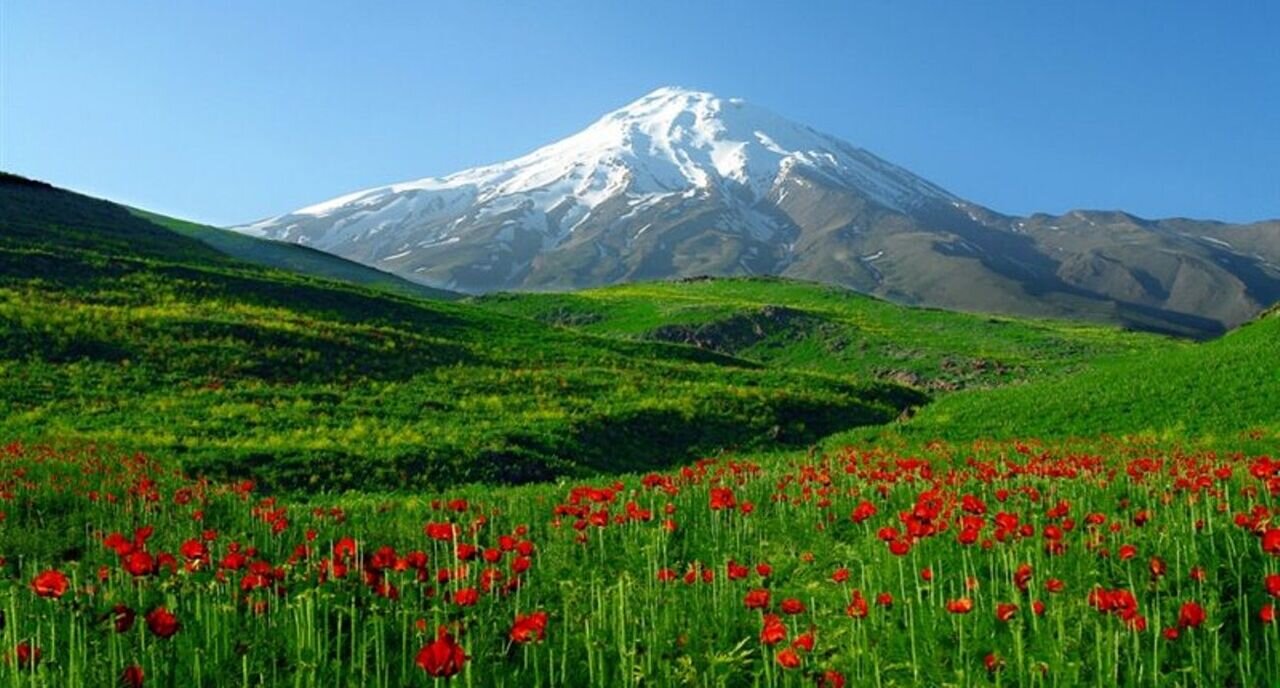Iconic Mount Damavand still facing challenges

TEHRAN – Nineteen years ago, environmentalists named July 4 Damavand Day in order to highlight the importance of the iconic mountain in preserving the valuable biodiversity of the region.
Despite the efforts of environmentalists, this day has not yet been included in the country's official calendar, and its environmental problems still persist.
Irregular exploitation of mines without environmental assessment, animal hunting and grazing, the establishment of mountaineering and tourism camps, and irregular construction of roads and villas in the areas around the slopes of Mount Damavand is among the serious environmental threats to the region.
Mount Damavand, the highest peak in Iran, is located in northeastern Tehran.
Environmental enthusiasts believe that with the inclusion of Damavand Day in the official calendar of the country, more attention should be paid to this unique natural phenomenon, but unfortunately, no action has been taken so far.
Mount Damavand, a potentially active volcano 5600-m high, is a stratovolcano that is the highest peak in Iran and the highest volcano in Asia, which is a significant mountain in Persian mythology and folklore; it is the symbol of Iranian resistance against despotism and foreign rule in Persian poetry and literature.
It is in the middle of the Alborz range, near the southern coast of the Caspian Sea, in Amol County, Mazandaran province, 66 kilometers (41 miles) northeast of the city of Tehran.
Mount Damavand is the 12th most prominent peak in the world and the second most prominent in Asia after Mount Everest. It is part of the Volcanic Seven Summits mountaineering challenge.
The peak has been plagued by many environmental problems in recent years, including, road construction, high tourist traffic flow, poor mining, overgrazing of livestock in the pastures around the peak slopes, depletion of Dasht-e Shaghayegh (the plain of Iranian poppies) by tourists, land-use changes and construction.
Mountains are home to 15 percent of the world´s population and a quarter of the world’s land animals and plants, in addition to providing fresh water to half of humanity, so their conservation is a key factor for sustainable development.
Because all kinds of precious metals and stones, coal, and other raw materials are hidden in the heart of the mountains, they have always been encroached on by humans; also due to agricultural lands which are used for forage production, herbs, livestock breeding, production of meat, dairy and all kinds of food.
Unfortunately, mountains are under threat from climate change and overexploitation, and Damavand is no exception.
Meanwhile, NGOs and environmental organizations have taken action to address these problems. Some local and indigenous peoples whose settlements are exposed to environmental damage have also taken action to prevent the threats, but yet the government and non-governmental organizations have not been able to work together and resolve the issue.
Formation of special working group ‘necessary’
Environmental activist Hossein Abiri Golpayegani has said that given the experience of more than three decades of environmental activity among environmental activists, especially in the mountainous sector, it is necessary that public organizations, government agencies, and locals form a special working group to protect and preserve Mount Damavand.
However, environmental activists have not yet been able to properly sensitize local people to the effects of the destruction of natural areas around their residences. Therefore, locals’ participation to defend Mount Damavand should be taken seriously,” he explained.
He went on to say that “Mount Damavand seems to be no priority for responsible bodies such as the Department of Environment (DOE), and the Ministry of Cultural Heritage, Tourism, and Handicrafts.
Although the DOE registered the upper part of the peak as a natural monument a few years ago, it has not done any protection measures for this 2500-m height so far.
Also, in 2008, Damavand was nationally registered as the first natural and historical monument by the cultural heritage ministry, but has not carried out any protection program as it should.”
To solve the problems of Mount Damavand, there is no choice but to gather governmental agencies, non-governmental organizations, and locals to cooperate; therefore, it is suggested that a working group be formed with the presence of the people and various organizations interested in preserving Damavand, responsible bodies such as the DOE, the Forests, Rangelands, and Watershed Management Organization, and the Ministry of Cultural Heritage, Tourism, and Handicrafts, he explained.
This working group can prepare instructions that must be implemented by all; for instance, related agencies will provide facilities, funds, and expertise to help identify problems in the region, and NGOs, as a line of communication between the government and locals, will hold training courses and promote culture among the people, he noted.
In this working group, locals will be tasked with protecting Damavand; once the protection of the environment becomes a culture for the people of the region, destruction will no longer continue but will be minimized, he added.
The first program of Damavand Day, which was held with the cooperation of the Tehran climb board, mountain climbing buffs, mountaineering groups, and the media from June 22 to 24, 2004, was accompanied by hundreds of climbers to symbolically collect the waste in Damavand mountainous area.
And each year, a special program has been conducted to mark this day, meanwhile, the officials are expected to seriously consider the protection of Damavand, so that it will no longer be subject to deliberate and unintentional destruction.
MG
Leave a Comment